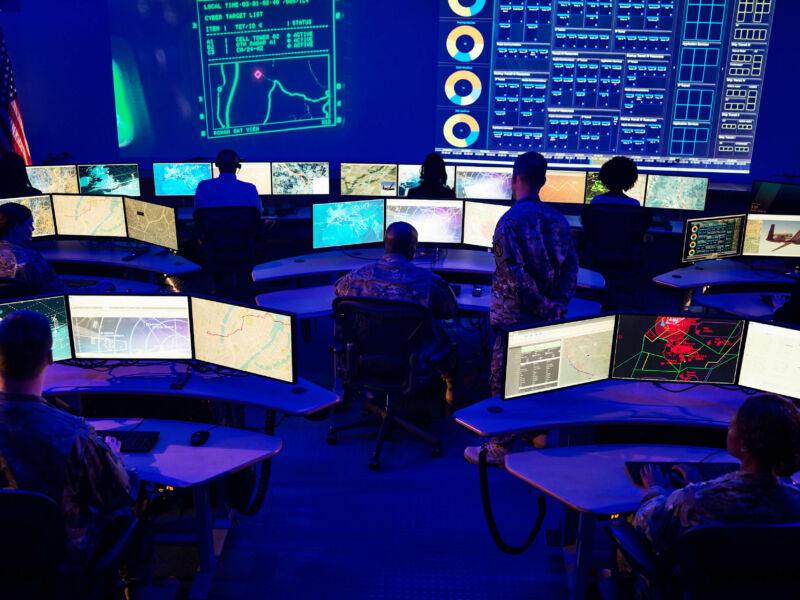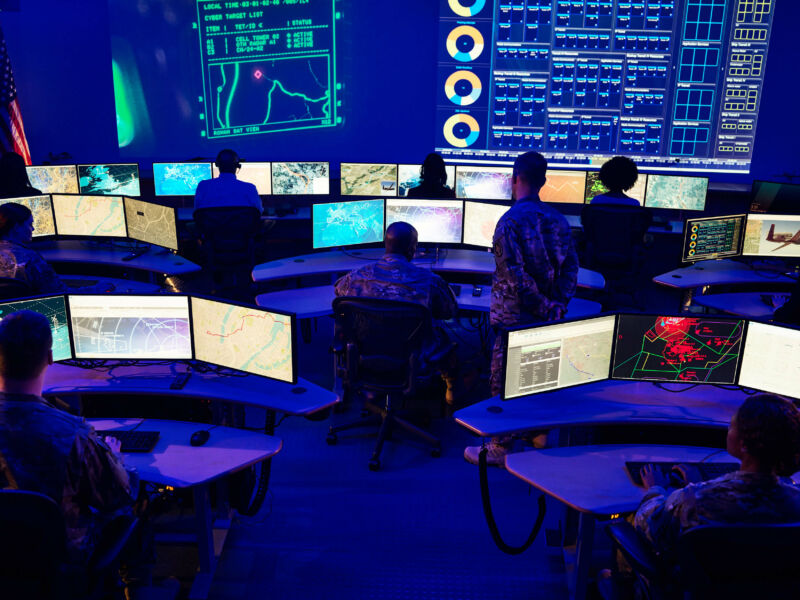
Enlarge / Fancy desks and cool blue lighting dominate this control room at Northrop Grumman’s Colshire location. (credit: Northrop Grumman)
Welcome back to the second part of our two-part Ars Technicast special edition on the future of connectivity on the battlefield, presented in partnership with Northrop Grumman. In part one, we talked about the Internet of Military Things, and how warfighters face many of the same challenges with IoT that consumers face—just at a different scale.
For part two—which you can listen to right here—we look at the role open systems play in bringing together all the different components that are necessary for a modern military to command, communicate, and control its way through an engagement. Most Ars readers probably see the words “open systems” and immediately think FOSS, but that’s not really the meaning we’re going for here. Instead, “open systems” in this context refers to things that share an inherent interoperability—like being able to utilize a single sensor pod on multiple different types of aircraft. It has been said that logistics is the true strength of any modern military, and designing open systems is a tremendous force multiplier. If nothing else, coming to war with a bunch of interchangeable weapons and sensors helps drastically simplify one’s supply lines.
Our guest for this conversation is Richard Sullivan, Northrop Grumman’s vice president of program management. Richard has been with Northrop since 1995 and has worked on a number of high-profile projects, including the development of the stealthy B-2 bomber. His current role involves figuring out how to drive warfighting system design toward more common and open solutions, so this topic is pretty much his bag, baby.





